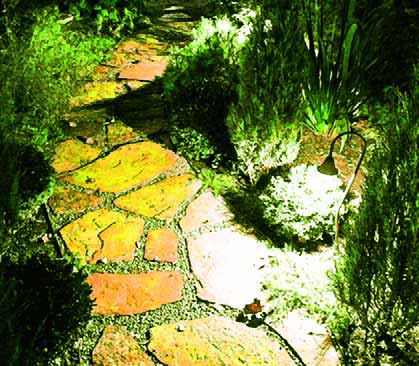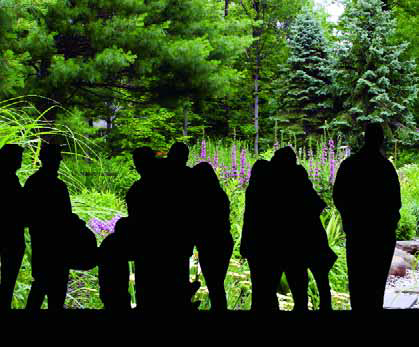landscape
Working on estate-sized residential projects is like assembling huge jigsaw puzzles in which all sorts of disparate pieces must ultimately fit together. While many of the individual parts have their own character and entail particular design and construction challenges, they're all part of a big picture you need to hold firmly in mind through every project phase. At GCS of Woodbridge, Calif., we pride ourselves on operating on a grand scale and on delivering the whole package, from landscape, hardscape, irrigation, control, communications, lighting and sound systems to watershapes of all sizes and types. Keeping all those elements sorted out within a single operation means we need to
Working on estate-sized residential projects is like assembling huge jigsaw puzzles in which all sorts of disparate pieces must ultimately fit together. While many of the individual parts have their own character and entail particular design and construction challenges, they're all part of a big picture you need to hold firmly in mind through every project phase. At GCS of Woodbridge, Calif., we pride ourselves on operating on a grand scale and on delivering the whole package, from landscape, hardscape, irrigation, control, communications, lighting and sound systems to watershapes of all sizes and types. Keeping all those elements sorted out within a single operation means we need to
Those of us who are designers and builders of full-scale outdoor environments (you know who you are) face a distinct challenge: In our work for our clients, we are expected to provide the outline and details for a huge range of project elements, from watershapes and patios to plantings and walkways and more. That list, at least so far as clients are concerned, also includes appropriate lighting, but that is not always something on which we focus. Indeed, lighting design is seen as a specialty even by those who tackle almost every other project feature - and there's no problem with that unless
Those of us who are designers and builders of full-scale outdoor environments (you know who you are) face a distinct challenge: In our work for our clients, we are expected to provide the outline and details for a huge range of project elements, from watershapes and patios to plantings and walkways and more. That list, at least so far as clients are concerned, also includes appropriate lighting, but that is not always something on which we focus. Indeed, lighting design is seen as a specialty even by those who tackle almost every other project feature - and there's no problem with that unless
With spring upon us, calendars of local events are filling up with garden tours of all shapes and sizes. From large estate tours and special events at botanical gardens to tours of wonderful neighborhoods staged by local garden clubs, there's much to be seen while wandering through the grounds and yards and viewing the work of other designers and architects. I've always enjoyed these tours and learn something from each and every one, whether it's about a new plant or plant combination or an installation technique shared by a generous designer or installer who's on hand for that purpose. On a completely business note, I also have to say that some of my best-ever
With spring upon us, calendars of local events are filling up with garden tours of all shapes and sizes. From large estate tours and special events at botanical gardens to tours of wonderful neighborhoods staged by local garden clubs, there's much to be seen while wandering through the grounds and yards and viewing the work of other designers and architects. I've always enjoyed these tours and learn something from each and every one, whether it's about a new plant or plant combination or an installation technique shared by a generous designer or installer who's on hand for that purpose. On a completely business note, I also have to say that some of my best-ever
Successful design is, I think, most readily achieved by linking a landscape to the architecture it accompanies. During my years as a landscape designer, however, I've seen far too many places where the landscape was apparently designed in a vacuum, displaying little to no connection to the home or any other structures on site. To the contrary, our job as landshapers is to
We live in a multi-dimensional world. Most people understand that space has three dimensions: height, width and depth. But relatively few people look at color in the same way - that is, as a three dimensional phenomenon. Understanding these three dimensions of color can become the key to unlocking your creativity as a designer. We began our study of color in LandShapes' May/June issue ("Designing in Color," click here), where we explored the scientific nature of color and its first dimension - hue, the name of a color (red, yellow, blue, orange, green or violet) - and learned that each hue has a temperature range (from warm to cool). We also learned that all six hues may be organized and better understood through the use of a helpful tool developed by color scientists called the color wheel. We will now continue our study of color by exploring the second and third dimensions of color and then by discussing contrast, analogous and complementary colors and color harmony. This will enable us to begin applying these fundamentals as landshapers and see in practical terms how understanding these fundamentals can help us become better
It has always bothered me a bit that designers tend to restrict their thinking to just the physical area that fits the definition of their design specialty. Landscape designers stick to outdoor spaces and interior designers work on interior ones - and seldom the twain shall meet. To my way of thinking, that's shortsighted - which is just one of the reasons I'm both a landscape designer and an interior designer. I would argue that, when it is appropriate, professionals on both sides of the divide need to open their eyes and work with the visual flow through and between clients' interior and exterior spaces to achieve optimal design results. As landscape professionals, we already accept the importance of the "borrowed view," a wonderful term used to describe the deliberate capturing of other properties' assets by creating living or artificial frameworks that make them an artistic component of our clients' landscapes. If we are good at capturing neighboring views for our landscapes, I'd suggest it's a short step to make certain that we achieve the same sorts of wonderful views between the
As designers, we learn to evaluate landscapes and watershapes with critical eyes, deciding if we like a plant palette, for example, or if a hardscape makes sense or a watershape is sited properly in a yard. These critical skills are important, because clients hire us to pull all of those elements together and develop solutions that suit their needs as well as those of the setting. On rare occasions, a design/build project will stay on a straight course from initial concept to execution. Usually, however, I know that any ideas or biases I carry onto a job site will change and become more complex as I get to know my clients' wants, needs and desires. In other words, my critical skill - my designer's point of view - is consistently



















